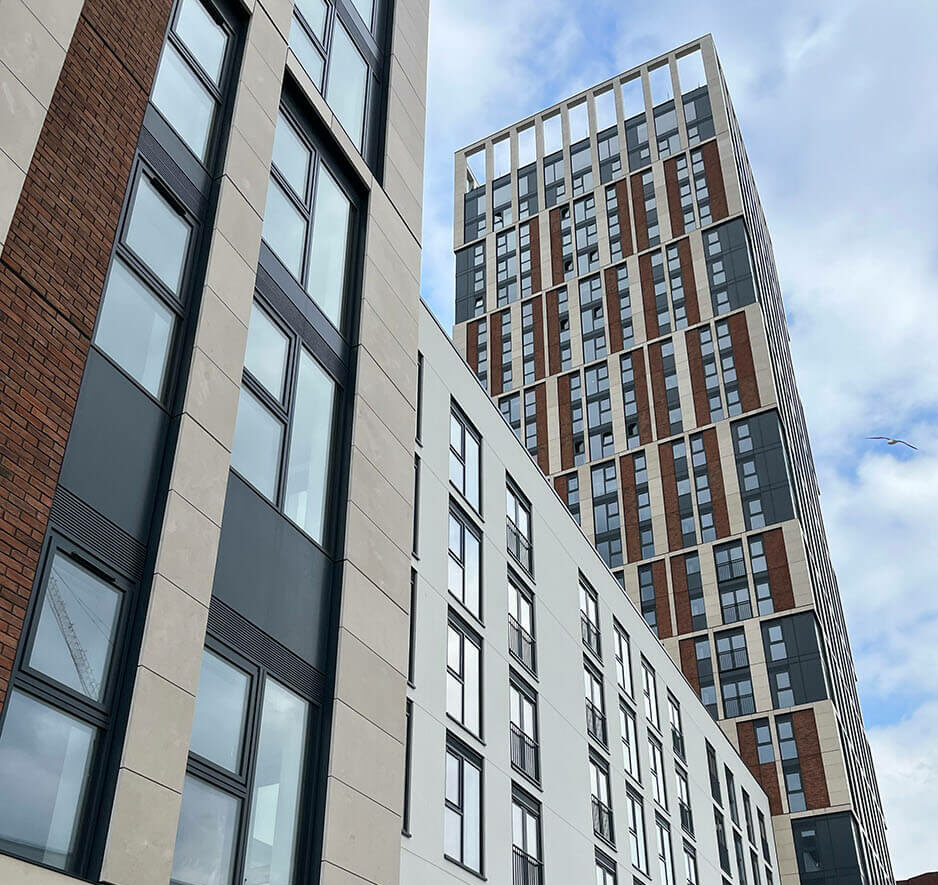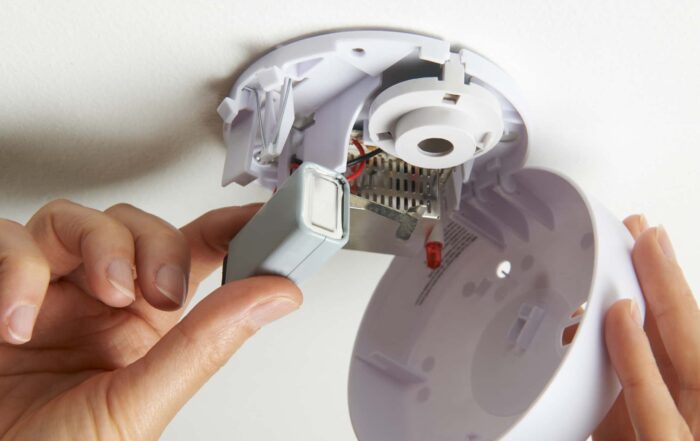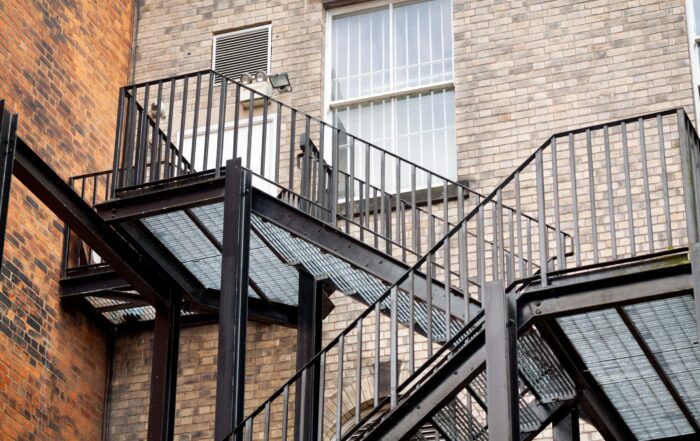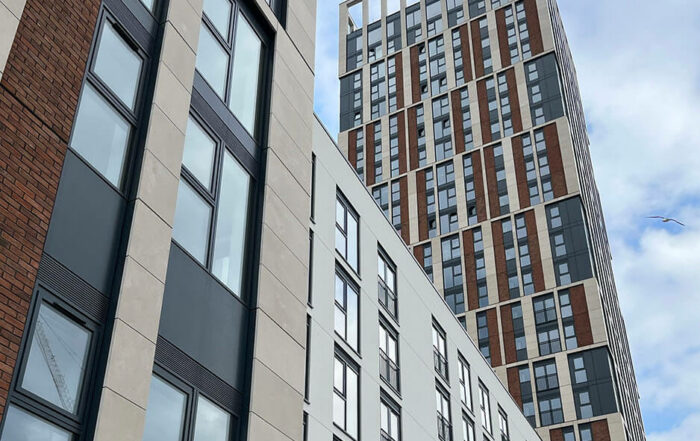Fire and Safety regulations for flats in the UK
In this thorough guide on fire safety in flats, we’ll discuss the fire and safety requirements for flats in the UK and what can be done to mitigate fires in residential buildings like a block of flats.
We’ll address what can be done by both the owner of the property and the people living in it and go through the various fire safety regulations and requirements for flats in the UK.
What are the Fire and Safety Concerns with flats?
The majority of fires in residential buildings start in a single flat and spread throughout the building. This means fire and safety measures need to be in each flat as well as shared spaces to reduce the chance of a fire spreading and causing more damage.
Most of these cases can be avoided or mitigated with effective fire and safety measures. You are 8 times more likely to die in a fire if you do not have working smoke alarms according to government statistics.
Because we spend a lot of time in our flats, there are a lot of possible causes of a fire. The main cause is cooking, followed by smoking and the third biggest contributor is faulty electrics which causes over 4000 house fires each year.
Landlords and Building Owners
Although there are various regulations that have been introduced over the years, the 2005 Fire Safety is what outlines the responsibilities of the landlord. It states that the landlord is only required to do conduct a fire risk assessment in the common areas, Houses of Multiple Occupancies (HMOs) and sheltered accommodation.
The latest guidance, Fire Safety (England) Regulations 2022 came into effect from January 2023 and this outlines some additional regulations for building owners and responsible persons. This replaced the 2011 Guidance for Fire Safety in purpose-built blocks of flats.
These means that if you own your flat then you are responsible for the fire safety in your own flat and if you rent then the letting agent is responsible. You can however arrange for a professional fire assessment to identify any potential problems and evaluate how safe your flat is.
What is a Fire Risk Assessment?
A Fire Risk Assessment is necessary with any building with multiple considerations or potential fire hazards. Whenever there are changes to the block of flats or the overall fire risk, a Fire Risk Assessment should be carried out and updated.
They also need to be carried out for each individual building because there are unique factors such as the people living in them or structural aspects of the building.
Here’s a guideline of some the things done during a Fire Risk Assessment:
- Identify and record any fire hazards.
- Identify and record the people at risk.
- Evaluate the findings of the Fire Risk Assessment, address fire hazards.
- Train people on fire safety practices and make sure there is a responsible person.
- Make a record of the process and review frequently.
What Fire Safety Systems and Equipment is required?
As mentioned previously, the landlord or owner should make sure shared spaces are safe from the risk of fire. These means checking emergency exit routes, installing mains-connected fire detection systems and providing the right equipment such as accessible fire extinguishers.
Generally, each room should also have a fire or smoke alarm, but these shouldn’t be connected to the mains to reduce the chances of false alarms. For fire and life safety systems with more than 14 detectors, a central panel or radio linking will help to ensure fire safety and security.
Here’s a list of all the equipment and fire security systems you’ll need:
- Mains Connected Fire Alarm System for shared spaces.
- Optic Smoke Detectors and Carbon Monoxide alarms in each flat.
- Fire blanket, usually in kitchen.
- Accessible Fire extinguishers or Fire blankets near exit routes.
- Emergency fire lighting along exit routes
For converted flats, if they were converted before 1991 then they do not require a mains-connected fire detection system but should have some fire separation methods. If they were converted after 1991 then they should adhere to the guidance and regulations outlined above.
Testing and Maintenance of Fire and Safety Systems in Flats.
Testing fire security systems and doing regular maintenance is necessary to make sure that that they are capable of detecting a fire or eliminating any fire hazards. Although there are no exact regulations on this, it’s just a sensible thing to do and the frequency of checks should depend on individual factors.
Some people advise that fire alarms should be tested by a landlord or tenant at least once a week, but other sources say that once a month is enough. It will depend on the number of potential fire hazards and how well the fire and safety systems have been maintained in the past.
We don’t just install them; we service and maintain fire and safety systems too. Our extensive industry experience also means we can take over servicing and maintenance contracts on systems that we haven’t installed.
Get your fire and security maintained by NSI Gold accredited experts now – get in touch!
Recent Articles
Innovations and Regulations for Smoke Detection and Fire Alarms
Making sure your fire safety systems are up to standards saves lives, protects your building, and ensures you’re compliant with government regulations. However, with so many types of alarm systems [...]
Fire and Security – The Complete Guide to Fire Escape Regulations in the UK
Fire risks are real, with 622,173 incidents attended by Fire and Rescue Services in England for the year ending March 2023. Many things can keep you safe from fires. But [...]
Fire Safety for Mixed-Use Buildings
Ensuring you have up to date fire safety systems for your mixed-use building isn’t just a good way to keep your residents and structure safe and secure – it is a legal requirement. [...]




